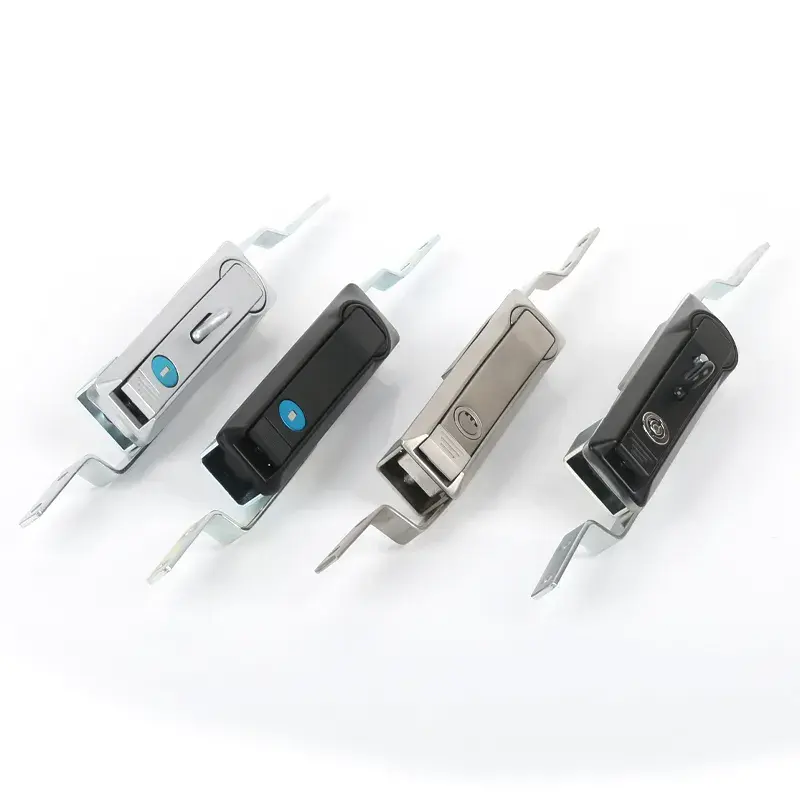Rod Lock Maintenance and Care Methods
2025-06-23
Rod locks are critical components used in various machinery and equipment to secure rods, shafts, or other moving parts. They are commonly found in industries such as manufacturing, automotive, aerospace, and robotics. Proper maintenance and care of rod locks are essential for ensuring their optimal performance, extending their service life, and preventing unnecessary downtime due to malfunctions or failures.
This essay explores the key maintenance practices and care methods for rod locks, focusing on cleaning, inspection, lubrication, and operational checks.
1. Regular Inspection and Monitoring
One of the most important maintenance steps for rod locks is regular inspection. This involves checking the lock mechanism for signs of wear, corrosion, and physical damage. Early identification of issues can prevent more significant problems down the line.
Key Steps:
Visual Inspection: Look for cracks, rust, or wear marks on the locking surfaces. Pay special attention to moving parts such as springs or pins.
Operational Tests: Engage the rod lock to test its locking and unlocking function. Ensure that the rod is securely held and that the mechanism operates smoothly.
Wear and Tear Assessment: Monitor the frequency of wear and adjust the replacement schedule for components like springs, seals, or locking pins based on the wear rate.
Frequency:
Perform a thorough inspection every 1–3 months, depending on usage intensity. More frequent checks may be needed in high-demand environments.
2. Cleaning and Debris Removal
Rod locks, particularly those in industrial settings, are often exposed to dirt, dust, oil, or other contaminants. Keeping the mechanism clean is vital for maintaining its performance and preventing the accumulation of debris that could impair movement.
Key Steps:
Clean the External Surfaces: Use a soft cloth or brush to remove dirt, dust, and debris from the exterior of the lock. Be gentle to avoid damaging any delicate components.
Flush the Mechanism: In some cases, it may be necessary to flush the lock mechanism with a non-abrasive solvent to remove dirt from hard-to-reach areas. Ensure that the solvent does not damage the lock's materials.
Avoid Excess Lubricant Build-up: Over-lubrication can attract dirt and cause the mechanism to seize up. Clean any excess oil or grease buildup to maintain proper function.
Frequency:
Clean the rod lock during each inspection. In particularly harsh environments, more frequent cleaning may be necessary.

3. Lubrication
Proper lubrication is crucial for ensuring smooth operation of the rod lock. Lubricant helps reduce friction between moving parts, prevents corrosion, and minimizes wear. However, it's important to choose the correct lubricant and apply it properly.
Key Steps:
Select the Right Lubricant: Use a lubricant compatible with the materials of the rod lock and the operating conditions (e.g., high temperatures, exposure to chemicals). Silicone-based lubricants or light oils are commonly used for rod locks.
Apply Lubricant Sparingly: Only apply a thin layer of lubricant to the moving parts. Excess lubricant can attract dust and grime, which could hinder performance.
Focus on Critical Points: Lubricate the lock mechanism’s moving parts, such as the pins, springs, and locking surface, while avoiding areas that are sealed or don't require lubrication.
Frequency:
Lubrication should be applied as needed, usually during each inspection. For environments with high friction or heavy use, consider applying lubricant every 1–2 months.
4. Temperature and Environmental Considerations
Rod locks are sensitive to environmental conditions, including temperature fluctuations, moisture, and exposure to chemicals. These factors can impact the longevity and effectiveness of the lock mechanism.
Key Steps:
Monitor Temperature Range: Ensure that the rod lock operates within its specified temperature range. Excessive heat or cold can cause metal components to expand or contract, leading to malfunction or premature wear.
Control Humidity and Exposure to Moisture: In damp environments, moisture can cause rust and corrosion. Consider using corrosion-resistant materials or applying protective coatings to the lock.
Protect from Harsh Chemicals: Some rod locks may be vulnerable to chemicals, so it’s important to shield them from exposure or use locks made from resistant materials.
Frequency:
Regularly monitor the environmental conditions where the rod lock operates, especially in outdoor or harsh settings.
5. Component Replacement
Certain components of the rod lock, such as springs, seals, or pins, have a limited service life and will need to be replaced periodically. Keeping an inventory of spare parts and establishing a replacement schedule can reduce downtime and prevent unexpected failures.
Key Steps:
Identify Wearable Parts: The most commonly replaced parts are springs, seals, and locking pins. These components are subject to wear and need to be checked regularly for damage.
Establish a Replacement Schedule: Based on the manufacturer's guidelines or operational demands, create a schedule for replacing critical components.
Use Genuine Parts: Always use OEM (original equipment manufacturer) parts to ensure compatibility and reliability.
Frequency:
Replace components as necessary, depending on the wear and tear observed during inspections.
6. Documentation and Record-Keeping
Maintaining accurate records of all maintenance activities is crucial for ensuring consistency and tracking the performance of rod locks over time. This documentation helps identify recurring issues, plan for replacements, and provide data for future improvements.
Key Steps:
Log Inspections: Record the results of each inspection, including any issues identified and corrective actions taken.
Track Component Replacements: Keep a record of when components were replaced and when the next replacement is due.
Review Performance Data: Use the collected data to review the overall performance and longevity of the rod locks, which may highlight areas for improvement.
Frequency:
Maintain records continuously, updating them after each maintenance task.
Conclusion
Rod locks are essential for securing machinery and ensuring safety and stability in various industries. By following proper maintenance and care methods—including regular inspections, cleaning, lubrication, and component replacements—operators can maximize the performance and longevity of these systems. Preventive maintenance, when done consistently, will help avoid costly repairs, ensure safe operation, and enhance the reliability of the machinery they protect.
As a professional manufacturer and supplier, we provide high-quality products. If you are interested in our products or have any questions, please feel free to contact us.


